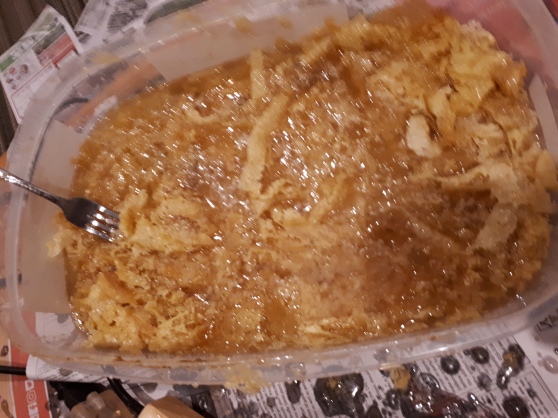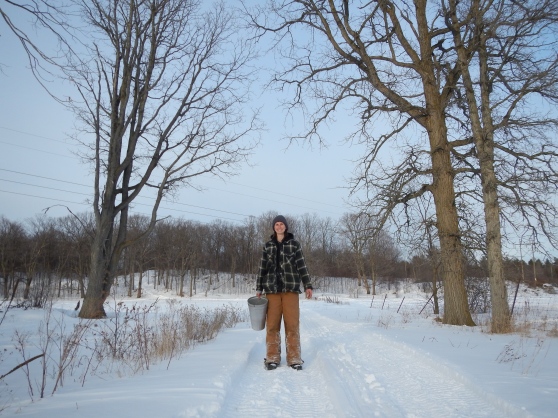July 16, 2017 – My first honey harvest! Talk about exhilarating! With the weather being sunny lately after all the rain we had I knew I was going to have some extracting to do, and soon. So, I bought an eight-shallow frame manual extractor from a supplier in Ottawa.
With the help of my Mom and Dad we harvested the top shallow super situated above the queen excluder from hive #2. Upon inspection, we saw that the bees did a pretty good job capping the honey, using nearly all cells in most frames of the shallow. My oh my, that shallow full of honey was heavy when I propped it up to see underneath. My Dad and I went about removing the frames one by one from the hive to an empty box in the RTV. We worked slowly and methodically. The bees didn’t get too worked up about us taking their honey reserves, that is until I began gently brushing them off the frames with the bee brush to ensure that we did not take away any stow-aways bees.
After putting the lids back on the hives we drove the RTV back to the roadside building, unloaded the super into the back of my vehicle, where I’d had the forethought to lay newspaper down to catch any honey drips.
I uncapped each frame using my electric uncapping knife. Having used both methods – heating a regular knife under hot water, as well as the electric uncapping knife – I must say to any other novice beekeepers out there, the electric knife is worth the splurge; the uncapping process is sped up and much more of the comb is left intact, equating to less repair time for the bees to fix the comb/ more time and energy spent on making honey. After uncapping a frame as carefully as possible, I slid it into position in the extractor.

The wax cappings
Given that I was doing this in my entranceway, without a table nor all the proper equipment, it was a painfullly slow process, however my excitement banished all concept of time while extracting. Now, for anyone who knows about the type of extractor I’m talking about, they know that the feet are to be bolted to the floor for stability purposes. Also they know the centrifugal force of the frames in the basket inside gets to be substantial after cranking the handle. Since the extractor’s location in my entranceway was temporary, I was not about to drill screws into the tile to anchor the feet for that extra stability. Instead, AJ and I wrestled to keep the extractor stable while cranking the handle.

Honey frames after being spun and honey collecting at the extractor’s bottom .
The honey flew out of the frames onto the sides, then slowly slid down to collect at the bottom of the barrel. After spinning enough times to remove honey from one side of the frames, we then cranked the spinner handle the other way to remove honey from the other side. By the time I was satisfied with the amount that we’d extracted from the frames, we stopped for the night to allow the honey to slowly gather at the bottom. (Coincidentally, our air conditioning is not working and we’re experiencing a heat wave. The one up side to that is that the honey is moving very well!)
What excitement I felt while opening the honey gate, watching the golden honey pour

The bounty from my first extraction pouring onto the sieve!
out onto a sieve for filtering. I was buzzing with pride. I’ve read that a shallow super typically yields 25-30 lbs of honey. My yield was 24.5 lbs!



